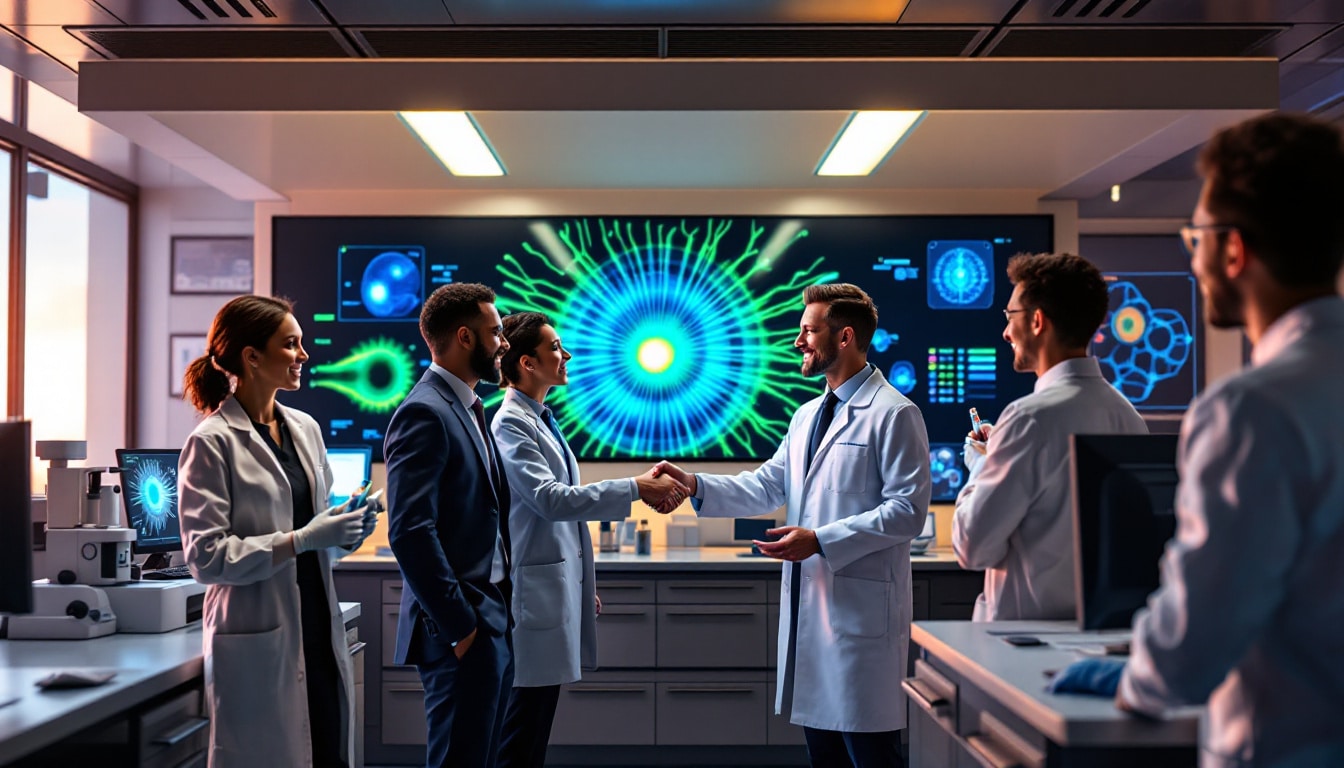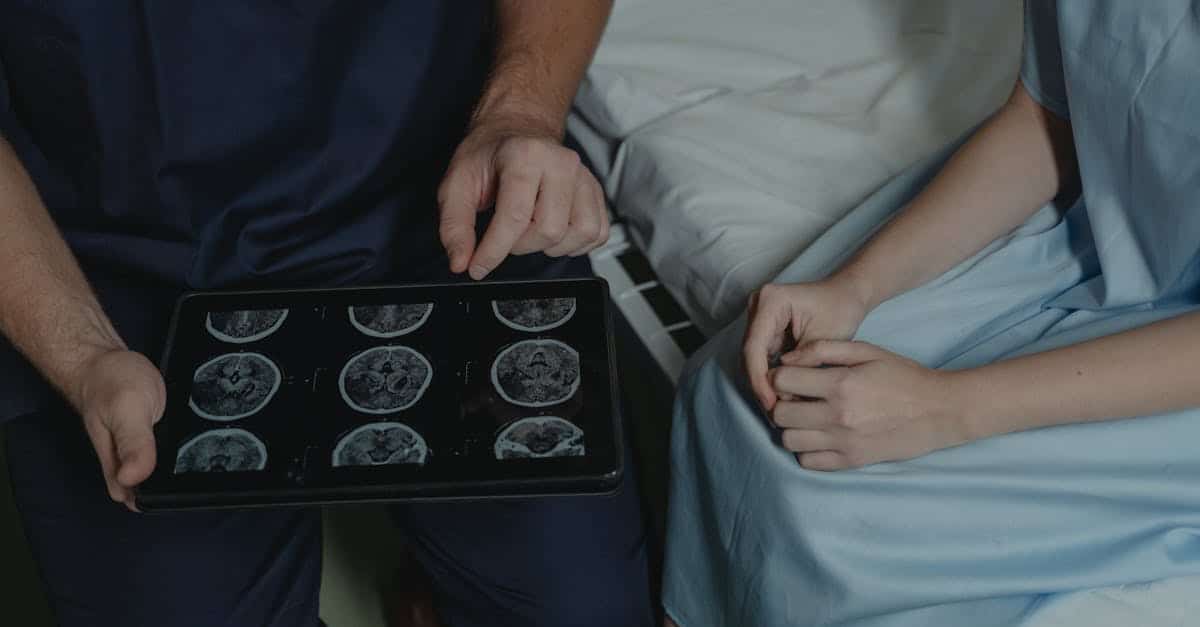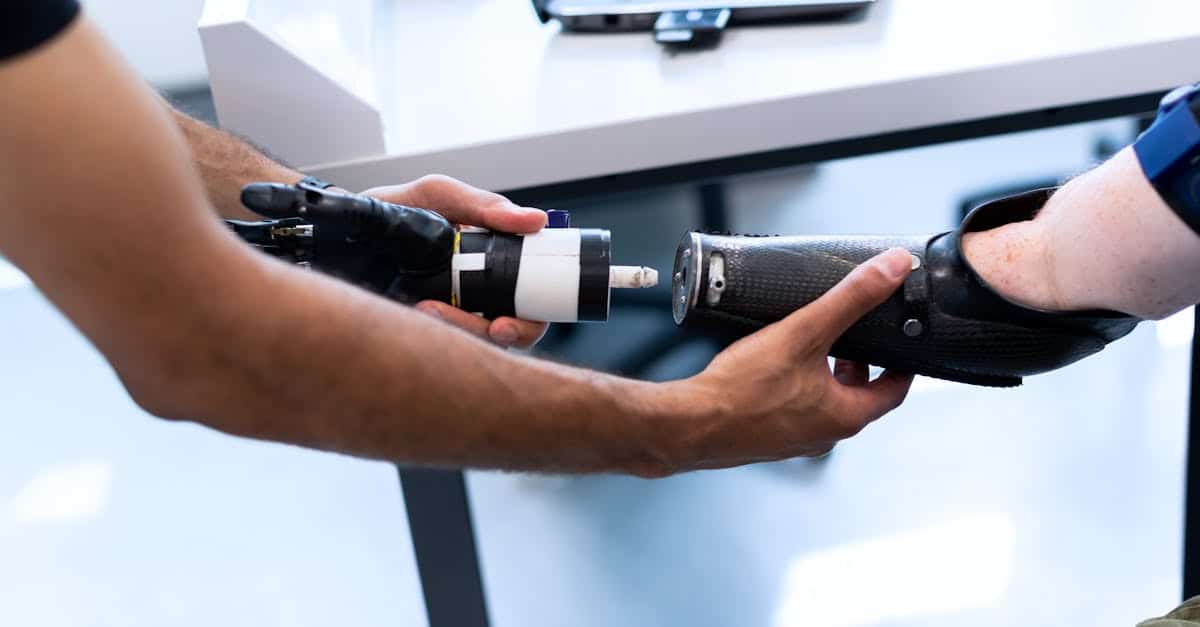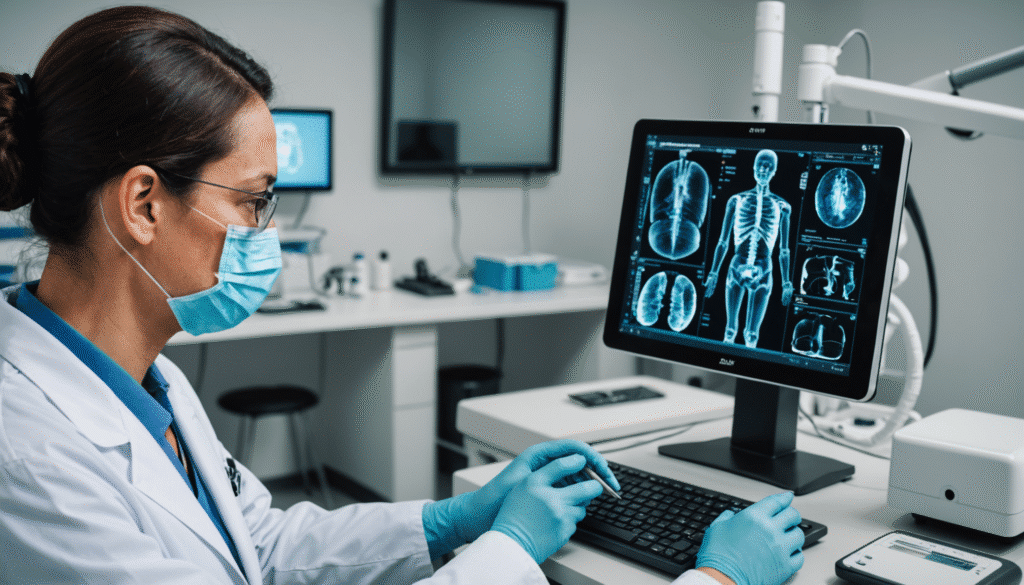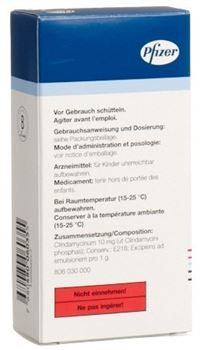Medical innovations continue to push the boundaries of what is possible.
MicroTransponder stands out with its Vivistim device, approved by the FDA.
One-year follow-up data reveal significant improvements in patients who are stroke victims.
This innovative treatment, combining electrical stimulation and rehabilitation, offers a glimmer of hope to individuals suffering from motor deficits. By stimulating the vagus nerve, Vivistim promotes neuronal plasticity and improves motor function. The results published in the journal Stroke confirm the sustained efficacy of this therapy.

What is the vagus nerve stimulation system from MicroTransponder?
The vagus nerve stimulation system developed by MicroTransponder, named Vivistim, represents a significant advancement in the treatment of post-stroke motor deficits. Vivistim is an implantable pulse generator that targets the vagus nerve to promote neuronal plasticity and improve the motor function of patients. This innovative technology combines electrical stimulation with a rehabilitation program, thereby offering a combined therapy that maximizes benefits for survivors of ischemic stroke.
The Vivistim device has been designed to be used in conjunction with traditional rehabilitation sessions, allowing for a holistic approach to recovery. Patients receive 90-minute therapy sessions three times a week over a six-week period. This combination of nerve stimulation and rehabilitation exercises aims to sustainably improve patients’ motor abilities, particularly for those suffering from severe upper limb deficits.
By integrating electrical stimulation directly linked to rehabilitation activities, Vivistim stimulates the brain in a targeted manner, thereby facilitating the relearning of movements and the consolidation of new motor skills. This synergy between technology and physical therapy represents a revolutionary approach in the field of neurorehabilitation.
What are the long-term results of Vivistim in stroke patients?
One-year follow-up data published in the medical journal Stroke confirm the promising results obtained with the Vivistim system. These results demonstrate significant and lasting clinical improvements in patients who have experienced an ischemic stroke and have benefited from the combined vagus nerve stimulation therapy. Patients showed a notable improvement in their motor abilities, measured by recognized tools such as the Fugl-Meyer Assessment – Upper Extremity (FMA-UE) and the Wolf Motor Function Test (WMFT).
Long-term analyses revealed that the benefits of the therapy do not merely persist during the duration of the treatment but continue to improve over time. Patients not only recovered motor abilities that were previously lost but also demonstrated consolidation of new skills, indicating true neuronal plasticity induced by the treatment. These results strengthen Vivistim’s position as an effective and durable treatment for post-stroke motor deficits.
Furthermore, the study highlights the importance of self-initiated therapy, where patients can autonomously activate vagus nerve stimulation in their daily lives. This flexibility allows for continuous adaptation and reinforcement of the progress made during rehabilitation sessions, contributing to persistent and significant long-term improvements.
How does the combined VNS and rehabilitation therapy work?
The combined vagus nerve stimulation (VNS) and rehabilitation therapy proposed by MicroTransponder integrates two complementary approaches to maximize the recovery of post-stroke patients. The Vivistim system operates by electrically stimulating the vagus nerve, a crucial nerve that influences several brain functions, including neuronal plasticity and motor abilities.
During rehabilitation sessions, patients wear a Vivistim device that delivers electrical impulses to the vagus nerve while they perform rehabilitation exercises. This coordinated stimulation enhances the neurological signals necessary for recovering motor movements. The goal is to strengthen existing neural connections and create new ones, thereby facilitating the relearning of lost movements following the stroke.
An innovative feature of Vivistim is its ability to enable self-initiated activation of vagus nerve stimulation. Patients can use a magnet to activate the system during their daily activities, giving them direct control over their therapy and allowing for additional stimulation outside of rehabilitation sessions. This flexibility fosters continuous integration of stimulation into daily life, contributing to faster and more durable improvements.
What is the regulatory approval pathway of Vivistim?
The Vivistim device from MicroTransponder received approval from the Food and Drug Administration (FDA) in the United States in 2021, following solid data from the VNS-REHAB clinical trial. This large-scale clinical trial was conducted across several centers, in a double-blind and randomized manner, and its results were published in the prestigious medical journal The Lancet.
The regulatory approval process has been rigorous, underscoring the safety and efficacy of the Vivistim system for treating moderate to severe motor deficits in survivors of chronic ischemic stroke. FDA approval is a crucial milestone that validates MicroTransponder’s technology and paves the way for its broader adoption in the medical field.
Furthermore, this approval is a testament to the robustness of the clinical studies and the company’s commitment to meeting the highest standards in medical research and development. It also enables healthcare professionals to confidently recommend Vivistim based on solid, internationally recognized clinical evidence.
What impact will MicroTransponder’s latest fundraising round have on VNS development?
In March 2025, MicroTransponder successfully raised 65 million dollars during its Series F financing round. This significant capital injection will accelerate the development and distribution of its Vivistim vagus nerve stimulation system. The funds will primarily be invested in research and development, expansion of manufacturing capabilities, and initiation of new clinical studies to further explore VNS applications.
With this funding, MicroTransponder is well positioned to expand its footprint in the neuromodulation market, which is expected to reach 12.6 billion dollars by 2034. Part of the funds will be allocated to exploring non-invasive forms of VNS, such as ongoing studies at King’s College Hospital, which are experimenting with transcutaneous vagus nerve stimulation (TVNS). This research could open new therapeutic avenues and increase the accessibility of VNS therapy to a larger number of patients.
Moreover, the investment will strengthen MicroTransponder’s capabilities to compete with market leaders such as Boston Scientific by continuously innovating and improving its technologies. It will also support marketing and education initiatives aimed at healthcare professionals, facilitating the rapid and effective adoption of Vivistim in clinics and hospitals worldwide.
What are the benefits of self-initiated VNS therapy for patients?
One of the most innovative aspects of Vivistim therapy is the ability for patients to initiate vagus nerve stimulation themselves on a daily basis. Using a magnet, patients can activate stimulation during their normal activities, which offers unprecedented flexibility and control over their therapy. This self-initiated functionality allows for a customization of therapy based on specific needs and times of the day when patients feel the most benefits.
This autonomy fosters active patient involvement in their own rehabilitation, thereby increasing their engagement and motivation. By allowing patients to stimulate their vagus nerve during daily actions, Vivistim contributes to a smoother integration of therapy into their lives, which can accelerate progress and improve overall quality of life. Additionally, this self-activation reinforces the gains achieved during clinic rehabilitation sessions, thereby consolidating motor improvements in the long run.
By offering this self-activation capability, MicroTransponder also meets the diverse needs of patients, allowing them to adjust therapy according to their schedule and activities, while ensuring continuous and effective stimulation of the vagus nerve.
How does MicroTransponder position itself in the global neuromodulation market?
MicroTransponder occupies a strategic position in the global neuromodulation market, a sector expected to reach 12.6 billion dollars by 2034. With rapidly anticipated growth, VNS systems, such as Vivistim, are estimated to contribute approximately 1.3 billion dollars to this market. This expansion reflects the growing demand for innovative and effective solutions in the treatment of neurological disorders.
Thanks to its technological advancements and strong clinical results, MicroTransponder stands out as a key player in this field. The recent fundraising of 65 million dollars enhances its ability to innovate and expand its market presence. Additionally, FDA approval and the successes of the VNS-REHAB clinical trials reinforce the company’s credibility and recognition among healthcare professionals and patients.
The neuromodulation market is currently dominated by companies like Boston Scientific, but MicroTransponder’s ongoing innovation allows it to differentiate itself and gain market share. Continued research into non-invasive forms of VNS and extended applications in other medical areas could open new growth opportunities and strengthen the company’s leadership position.
Furthermore, MicroTransponder’s commitment to providing evidence-based solutions and its ability to adapt to the changing needs of patients and healthcare structures ensure its relevance and ongoing success in the competitive landscape of neuromodulation.
Recent data published by MicroTransponder highlights a significant advancement in the field of vagus nerve stimulation (VNS). After one year of follow-up, the results demonstrate notable and lasting clinical improvements in patients who are victims of ischemic stroke who have benefitted from paired VNS therapy. This innovation opens new perspectives for treating severe motor deficits, offering a glimmer of hope to stroke survivors seeking to regain their mobility.
The Vivistim system from MicroTransponder, approved by the FDA in 2021, has proven to be a valuable tool in promoting neuronal plasticity and improving motor functions. By combining electrical stimulation with rehabilitation sessions, Vivistim allows patients to actively engage in their healing process, thereby fostering significant and lasting functional gains. The integration of the self-initiated component enhances patient autonomy, allowing them to manage their therapy daily.
The implications of these discoveries are vast for the medical sector. With the global neuromodulation market expected to reach 12.6 billion dollars by 2034, MicroTransponder positions itself as a key player through its proven innovations. The recent investment of 65 million dollars in Series F reflects investor confidence in the potential of Vivistim and strengthens the company’s capacity to continue its research and expansion.
The testimony of CEO Richard Foust highlights the importance of this advancement for healthcare professionals. By offering a therapeutic option based on solid evidence, Vivistim enables neurologists, physiotherapists, and other specialists to provide an innovative and effective approach for post-stroke patients. This therapy represents a true turning point in the continuum of care for stroke patients, establishing new treatment standards and significantly improving the quality of life for patients.
In conclusion, MicroTransponder’s long-term data reinforce Vivistim’s position as a revolutionary solution in post-stroke rehabilitation. By combining cutting-edge technology and a commitment to medical innovation, MicroTransponder significantly contributes to improving available treatments, thus offering a promising future for patients with motor deficits following a stroke.



